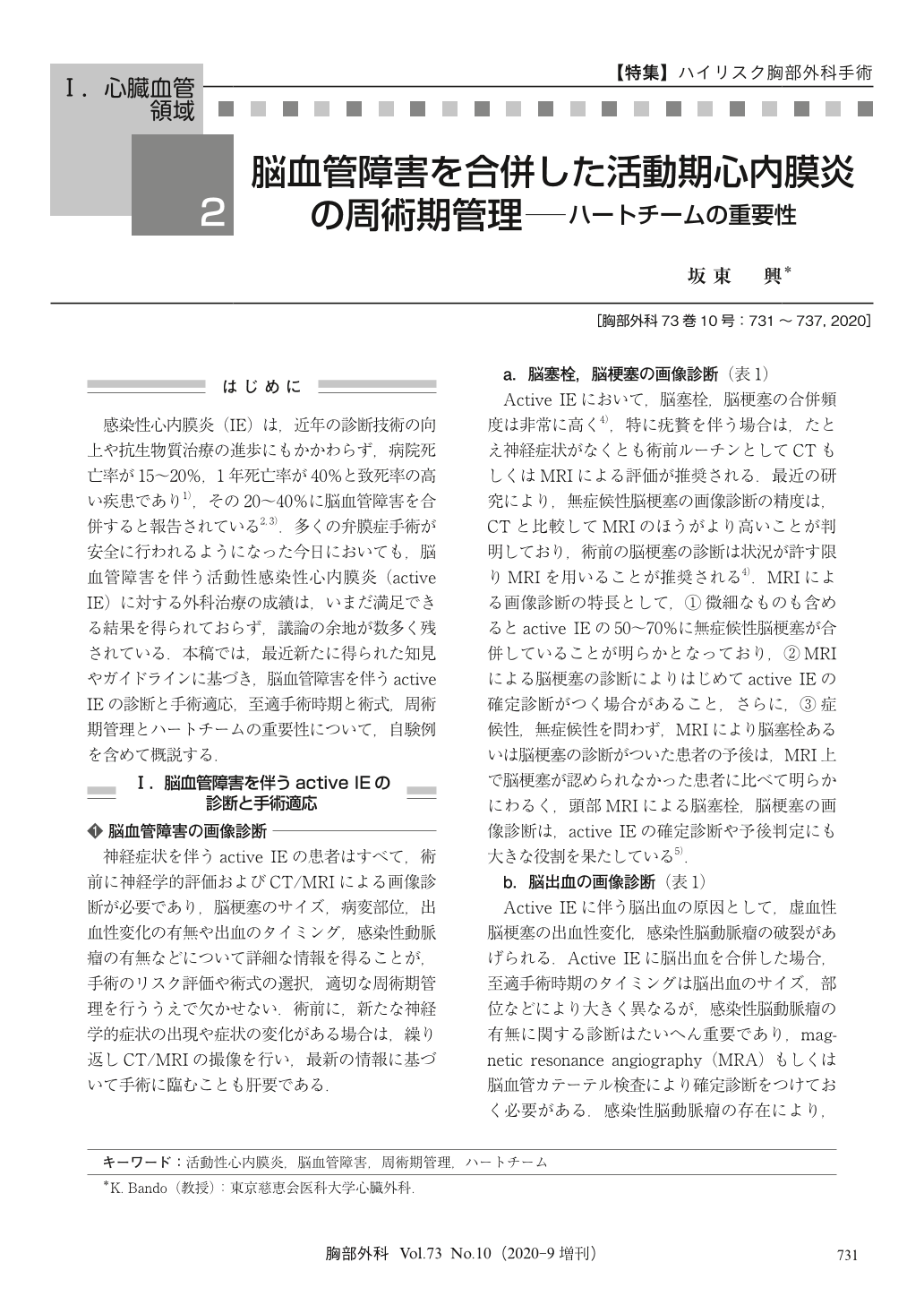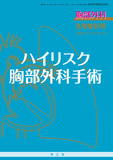Japanese
English
- 有料閲覧
- Abstract 文献概要
- 1ページ目 Look Inside
- 参考文献 Reference
感染性心内膜炎(IE)は,近年の診断技術の向上や抗生物質治療の進歩にもかかわらず,病院死亡率が15~20%,1年死亡率が40%と致死率の高い疾患であり1),その20~40%に脳血管障害を合併すると報告されている2,3).多くの弁膜症手術が安全に行われるようになった今日においても,脳血管障害を伴う活動性感染性心内膜炎(active IE)に対する外科治療の成績は,いまだ満足できる結果を得られておらず,議論の余地が数多く残されている.本稿では,最近新たに得られた知見やガイドラインに基づき,脳血管障害を伴うactive IEの診断と手術適応,至適手術時期と術式,周術期管理とハートチームの重要性について,自験例を含めて概説する.
Surgery for active infective endocarditis (IE) carries the greatest risk of any valve surgery, especially when complicated by cerebral infarction or bleeding. Surgical candidates with IE associated with neurologic symptoms should have a neurologic evaluation and brain imaging either by computed tomography (CT) or magnetic resonance imaging (MRI). Even among patients without neurologic symptoms, routine preoperative screening can be justified, especially those with high-risk vegetation.
Current recommendations indicate that surgery should be delayed for 1 to 2 weeks in patients with non-hemorrhagic strokes and 3 to 4 weeks in patients with hemorrhagic strokes. If patients have suffered from stroke, any anticoagulation increases the risk of hemorrhagic conversion, and if bleeding has already occurred, this risk further increases. Accordingly, the treatment team has to make a difficult decision whether anticoagulation should be withheld or decreased.
Transesophageal echocardiography (TEE) and/or transthoracic echocardiography (TTE) play a major role in determining the size of vegetation, abscess and fistula formation, and severity of regurgitation during the pre- and intra-operative periods. Cerebral MRI/CT are also important to diagnose the severity of cerebral infarction or bleeding before and after surgery. The risk of IE patients with cerebral complication may change by the hour, so a solid heart team approach is mandatory to make a prompt diagnosis and determine the optimal timing for surgery.

© Nankodo Co., Ltd., 2020


